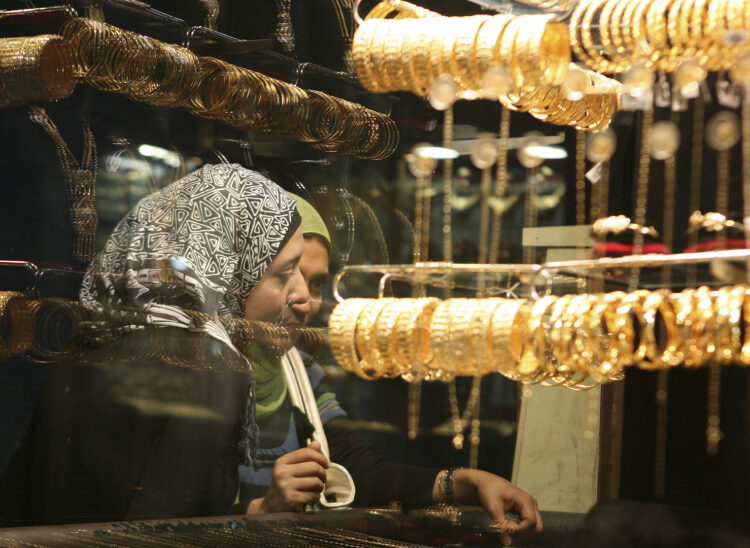Local markets are going through a state of tension that drives prices crazy, from gold to food products such as eggs, vegetables and birds.
The price of a gram of gold has risen around the clock, since the middle of last week, with the beginning of its rise globally, with large leaps, amounting to about $50, per ounce, which exceeded $2,040, on global stock exchanges, and despite gold losing some of its luster globally, the price of an ounce settled at $2,004. . Gold continues its madness in the local market, exceeding the price of the most traded 21 carat gram, 2290 pounds, more than 300 pounds, over the average price of a gram last week.
Buyers rush to acquire gold, in hysterical scenes circulating on social media, showing a great demand from consumers to acquire gold bars with the onset of a season of traditional demand for buying gold as jewelry and artifacts for marriage gifts and Muslim and Christian holiday celebrations, which last for 10 days.
Gold prices, which have historically reached their highest levels, show other motives for Egyptians to stand in long lines to acquire gold, from a market with a limited amount, on which strict restrictions are imposed on imports, to agree with merchants to buy any offered quantities of bars and artifacts of 24 and 21 grams.
Egyptians are looking for a way to save their savings, especially those that some were able to withdraw from banks after the withdrawal systems were disrupted for long periods of time. Liquidity holders are motivated by a decline in bank interest yields, which reach a maximum of 22%, in light of an official rise in inflation rates to 39%, according to Central Bank estimates, while the overwhelming majority carry psychological motives with a prediction of a new deterioration in the value of the pound, and the government’s tendency to make a fourth reduction in currency value, over the coming days.
Speculation on the dollar increases in the markets, and the demand for its acquisition by investors increases, during a period of an official holiday that extends for 4 days, in light of the expectations of the International Monetary Fund and the World Bank that the dollar will continue to be scarce, GDP will decline, and the pound will gradually decline, at a rate of 6% annually.
The psychological state of consumers reflects the panic that afflicts businessmen following the negotiations conducted by the Governor of the Central Bank and the Minister of Finance, with the International Monetary Fund and the World Bank, in Washington over a period of 3 days, which resulted in the continuation of points of contention between Egypt and the two institutions supporting the government, regarding the application of a flexible exchange rate for the currency and strengthening the role of the private sector, slowing the pace of infrastructure projects undertaken by the government, especially those funded in dollars, reducing the role of the army and security agencies in the economy, building more retail projects and gas stations, and moving to sell public assets, according to the timetable agreed upon at the end of last December.
Analysts agree that the pound will officially decline, and that the longer the Central Bank delays the implementation of the fourth flotation, the more painful the decline will be, driven by an increase in the scarcity of the dollar, and an increase in its value in the market from the limits of 31 pounds officially, to 37 pounds against the dollar in the parallel market, by up to 16%.
Analysts indicate that the decline in the real interest rate on the pound, and the government’s failure to sell government bonds worth 3 billion pounds during the past week, led to a reduction in their investments in hot money, which the government is looking for in international markets, with the rise in the value of the dollar in futures contracts for a period of 12 months to reach 41.6 pounds.



